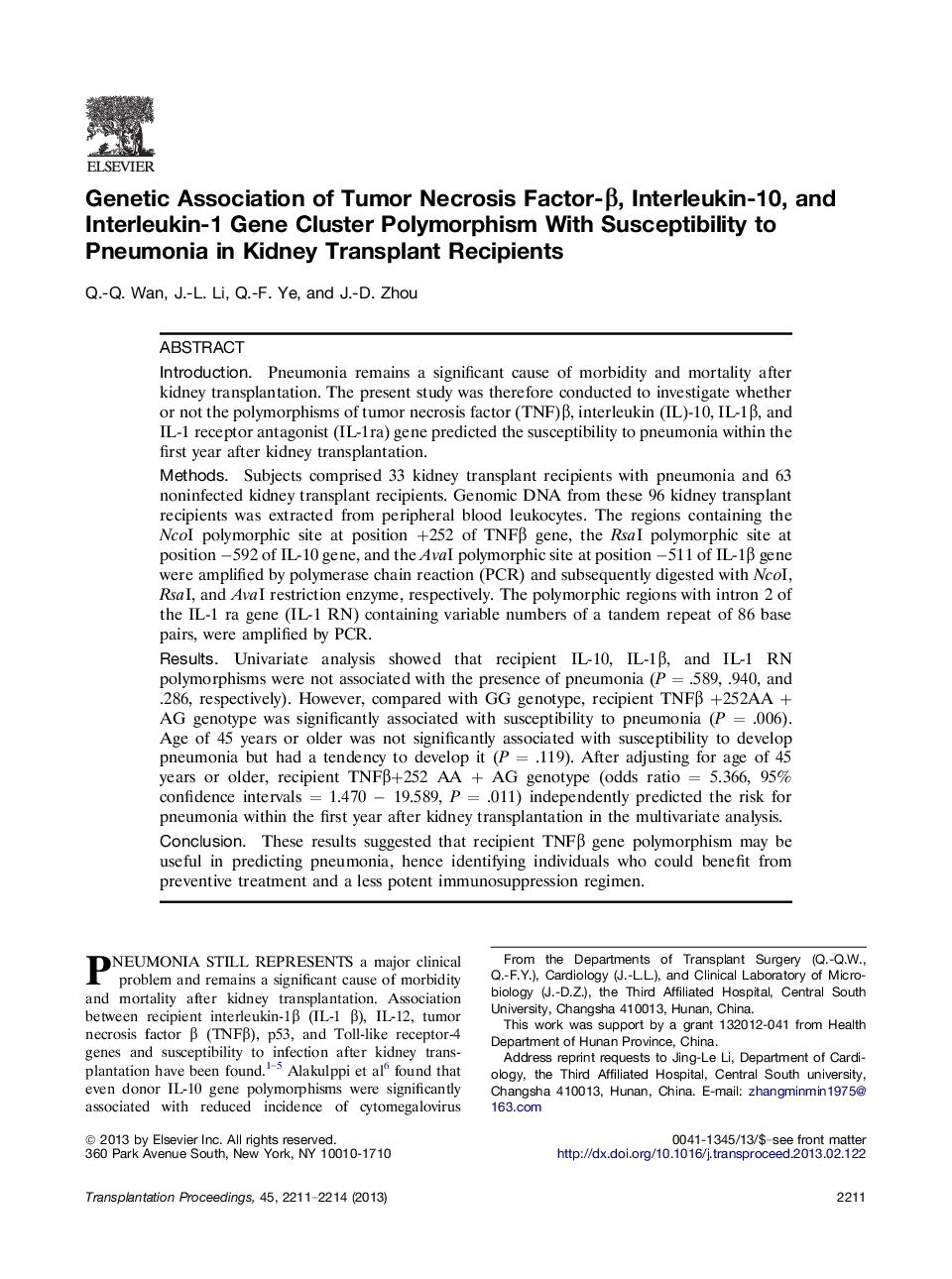| Article ID | Journal | Published Year | Pages | File Type |
|---|---|---|---|---|
| 4255655 | Transplantation Proceedings | 2013 | 4 Pages |
IntroductionPneumonia remains a significant cause of morbidity and mortality after kidney transplantation. The present study was therefore conducted to investigate whether or not the polymorphisms of tumor necrosis factor (TNF)β, interleukin (IL)-10, IL-1β, and IL-1 receptor antagonist (IL-1ra) gene predicted the susceptibility to pneumonia within the first year after kidney transplantation.MethodsSubjects comprised 33 kidney transplant recipients with pneumonia and 63 noninfected kidney transplant recipients. Genomic DNA from these 96 kidney transplant recipients was extracted from peripheral blood leukocytes. The regions containing the NcoI polymorphic site at position +252 of TNFβ gene, the RsaI polymorphic site at position −592 of IL-10 gene, and the AvaI polymorphic site at position −511 of IL-1β gene were amplified by polymerase chain reaction (PCR) and subsequently digested with NcoI, RsaI, and AvaI restriction enzyme, respectively. The polymorphic regions with intron 2 of the IL-1 ra gene (IL-1 RN) containing variable numbers of a tandem repeat of 86 base pairs, were amplified by PCR.ResultsUnivariate analysis showed that recipient IL-10, IL-1β, and IL-1 RN polymorphisms were not associated with the presence of pneumonia (P = .589, .940, and .286, respectively). However, compared with GG genotype, recipient TNFβ +252AA + AG genotype was significantly associated with susceptibility to pneumonia (P = .006). Age of 45 years or older was not significantly associated with susceptibility to develop pneumonia but had a tendency to develop it (P = .119). After adjusting for age of 45 years or older, recipient TNFβ+252 AA + AG genotype (odds ratio = 5.366, 95% confidence intervals = 1.470 − 19.589, P = .011) independently predicted the risk for pneumonia within the first year after kidney transplantation in the multivariate analysis.ConclusionThese results suggested that recipient TNFβ gene polymorphism may be useful in predicting pneumonia, hence identifying individuals who could benefit from preventive treatment and a less potent immunosuppression regimen.
